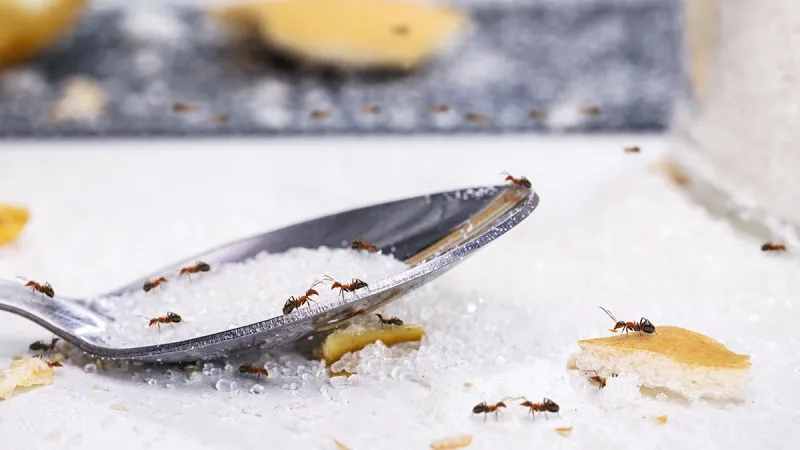
Tawny Crazy Ants Information

Tawny Crazy Ants
More about Tawny Crazy Ants
The tawny crazy ant, scientifically known as Nylanderia fulva, is a notorious invasive ant species that has gained attention in recent years due to its destructive impact on ecosystems and human structures. Originally native to South America, this ant has spread to many parts of the world, including the United States, where it has become a major pest. BREDA Pest Management dives into the world of tawny crazy ants, exploring their characteristics, behavior, impact on the environment, and management strategies to ensure you get the best pest control available.
Tawny crazy ants are small ants, typically measuring between 2.2 to 3.8 mm in length. They are light brown to tawny in color, with long legs and antennae, which give them their distinctive appearance. They are known for their rapid and erratic movements, zigzagging and darting around in a seemingly chaotic manner, hence their name "crazy" ants. They are also known as "Rasberry ants" after Tom Rasberry, an exterminator who first discovered their invasive presence in the United States in 2002.
One of the most concerning aspects of tawny crazy ants is their impact on the environment. They have a voracious appetite and are known to consume a wide range of food sources, including insects, small animals, seeds, and plant nectar. This has led to the displacement of native ant species and the disruption of local ecosystems. They have also been known to damage agricultural crops, particularly fruit trees and ornamental plants, which can result in economic losses.
Tawny crazy ants are also notorious for their ability to infest human structures. They are known to invade homes, businesses, and electrical equipment, causing damage and nuisance. They can short-circuit electrical systems by nesting in electrical boxes, leading to electrical failures and potential fire hazards. Additionally, their presence can cause anxiety and discomfort for homeowners and businesses due to their large populations and erratic behavior.
Managing tawny crazy ant infestations can be challenging due to their invasive nature and adaptability. Traditional ant control methods may not be effective against them. They have multiple queens and can establish large colonies with numerous satellite nests, making them difficult to eliminate. Furthermore, they have a high reproductive rate, and their ability to rapidly rebound from control efforts can be frustrating for homeowners and pest management professionals alike.
Integrated pest management strategies that combine multiple approaches, including sanitation, habitat modification, and targeted insecticide applications, can be effective in managing tawny crazy ant populations. Regular inspections and monitoring are important to detect infestations early and prevent their establishment. In some cases, professional pest management services may be required to effectively manage infestations in homes, businesses, or other structures.
Preventing the spread of tawny crazy ants to new areas is also crucial. Avoiding the transportation of infested materials, such as firewood, potted plants, and soil, can help prevent their introduction into new environments. Awareness and education about the risks associated with this invasive species among homeowners, businesses, and the general public can also play a role in preventing their spread and minimizing their impact.
The tawny crazy ant is an invasive and ecologically disruptive species that pose challenges to both natural ecosystems and human structures. Their rapid spread, destructive impact on native species and habitats, and ability to infest human structures make them a significant concern for homeowners, businesses, and pest management professionals. Implementing integrated pest management strategies, preventing their spread, and raising awareness about their risks are crucial steps in managing and minimizing the impact of tawny crazy ants.


